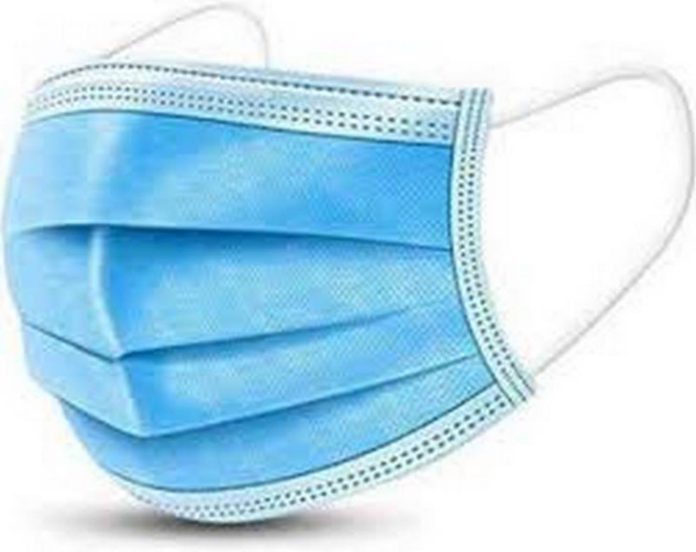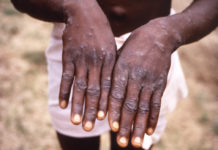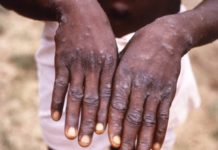
A wet face mask is less effective because water restricts airflow and cuts the amount of viral filtering, scientists have warned.
The World Health Organization says dry three-layer masks – the now-common blue surgical masks are the most recognisable of these – worn over the mouth and nose can protect people from catching coronavirus.
But a former senior WHO official has urged users to change their face covering if it gets wet because ‘moisture makes masks porous’, meaning ‘all types of mask are essentially vulnerable in damp weather’.
Professor Tim Spector, who runs the Covid-19 Symptom Study app, warned the Government that the public aren’t aware of the risks involved with a wet face mask, saying it would be ‘useful if clear advice was issued to the public’.
The warning comes as the UK heads deeper into the autumn, with rain showers and storms expected. The Met Office has forecast more ‘showery spells’ and periods of ‘prolonged rainfall’.
Karol Sikora, a former official in the WHO’s cancer programme, told The Times: ‘Moisture makes masks porous and because of this all types of mask are essentially vulnerable in damp weather.
‘I think the public generally lacks any knowledge or guidance on this issue. They should be given clear advice by the authorities, particularly given the current spell of heavy rain.
‘It is important that we know to change our masks if they become damp at all – higher-priced masks do not have different rules.’
Dr Simon Clarke, Associate Professor of Cellular Microbiology at the University of Reading, told MailOnline: ‘A damp mask is no different from a dirty handkerchief tied to your face.
‘If it’s become damp from the water vapour in your breath or through coughing and sneezing, this is probably a good sign that you need to put a new or cleanly laundered replacement mask on anyway.
‘The advice on wearing face coverings mentions that those made of cloth should be constructed of material that is as densely woven as possible to prevent droplets from escaping while still allowing you to breathe.
‘Depending how wet the material is, there could be an impact on the size of the holes in the fabric, either making them too large to prevent droplets getting in or out, or too narrow to allow you to breathe properly.
‘I always make sure I have at least one spare, clean facemask with me whenever I go out so I can replace the one I’m wearing if it gets wet or I’ve been wearing it for a while.’
The warning also applies to masks that have become wet due to moisture from breath.
The Nursing Times says these also suffer from an ‘increased resistance to airflow’ and are therefore ‘less efficient at filtering bacteria and has increased venting’.
Dr Simon Clarke, Associate Professor of Cellular Microbiology at the University of Reading, said: ‘A damp mask is no different from a dirty handkerchief tied to your face.
‘The current view from the NHS and WHOP
Venting is when more air and droplets are expelled by the mask.
The WHO backs up his warning, stating online that all masks should be changed if ‘wet or visibly soiled’.
‘A wet mask should not be worn for an extended period of time,’ the body says. ‘Replace masks as soon as they become damp with a new clean, dry mask.’
Other scientists added their voices to calls for the Government to make the risks of wearing a wet mask clear to the public.






